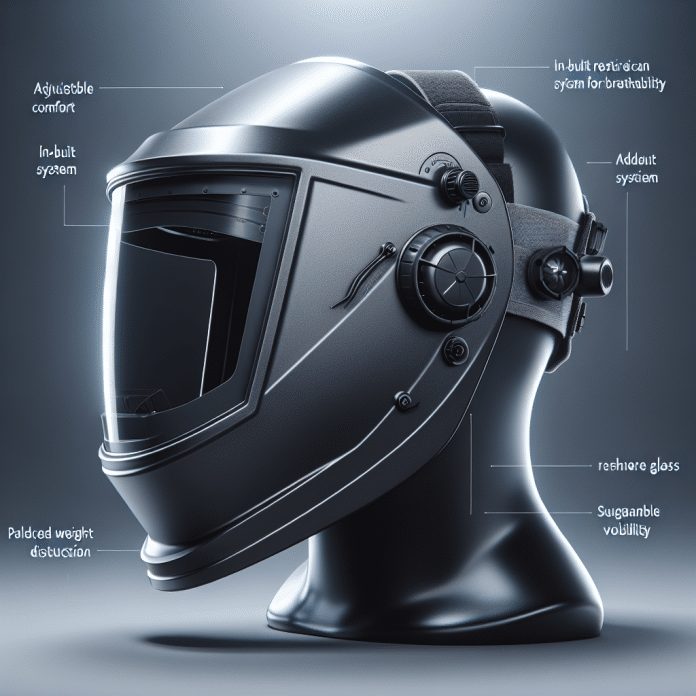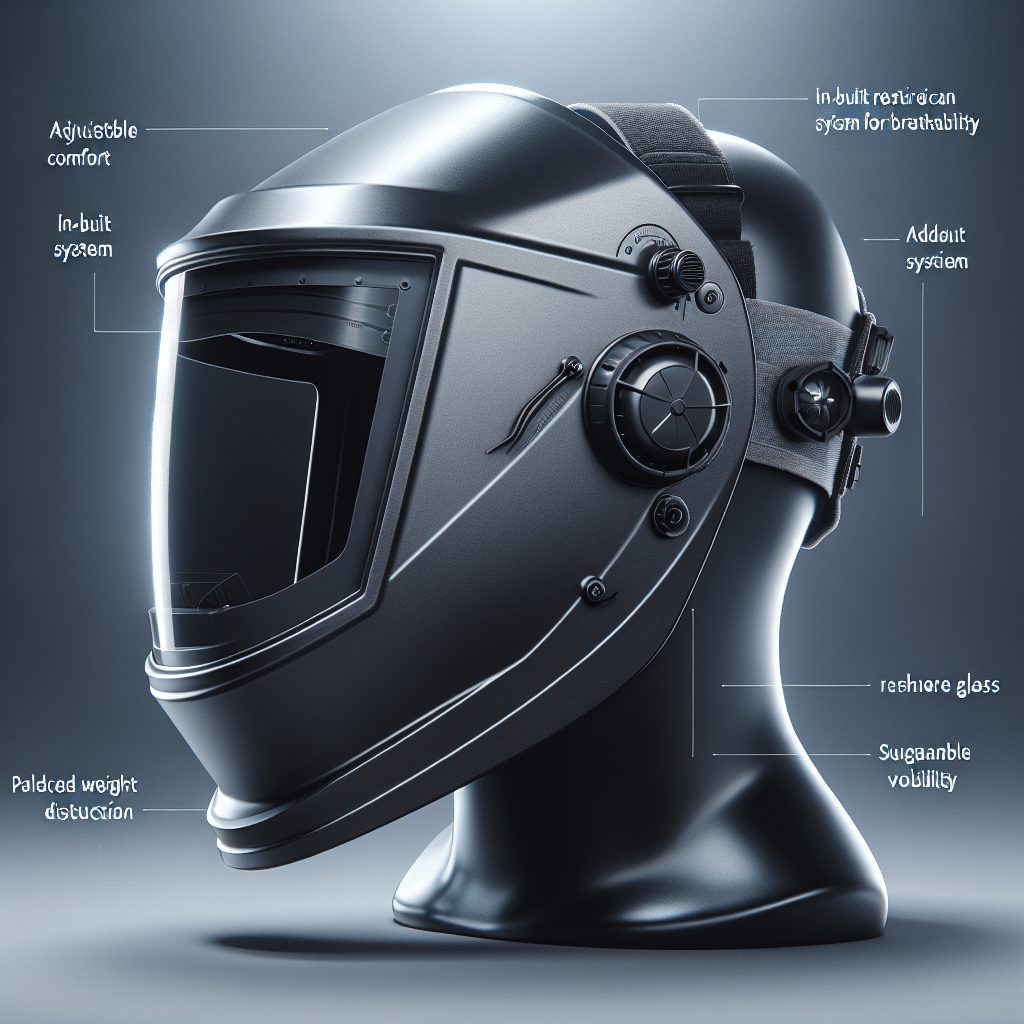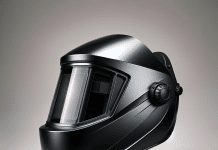Are you tired of wearing heavy welding helmets that cause you constant discomfort and pain in your head and neck? Look no further, as we have the perfect solution for you! Introducing lightweight welding helmets that are specifically designed for all-day use, providing you with ultimate comfort and preventing those dreaded head and neck aches. Say goodbye to worn-out shoulders and strained muscles, and say hello to a pain-free welding experience. These helmets are not only lightweight, but they also offer superior protection for your eyes, face, and neck. Don’t let discomfort hinder your productivity any longer – make the switch to lightweight welding helmets and enjoy a pain-free welding experience.
Review contents
Selecting the Right Welding Helmet
When it comes to selecting the right welding helmet, there are a few key factors to consider. The first one is the weight of the helmet. Since you’ll be wearing it for long periods of time, it’s important to choose a helmet that is lightweight. This will help prevent strain on your head and neck muscles, allowing you to work comfortably for extended periods.
Another important consideration is the level of protection provided by the helmet. A welding helmet should offer adequate protection from sparks, spatter, and ultraviolet (UV) and infrared (IR) radiation. Look for a helmet that meets the necessary safety standards and provides full coverage of your face and neck.
Adjustable settings are also crucial in a welding helmet. Make sure that the helmet you choose has adjustable features such as sensitivity and delay controls. These settings allow you to customize the helmet’s response to varying welding conditions, ensuring optimal visibility and protection.
Last but not least, comfort is key. Look for a helmet that offers a comfortable fit. It should be adjustable to accommodate different head sizes and shapes. A well-fitting helmet will not only enhance your comfort but also improve your overall welding experience.
Features to Look for in a Lightweight Welding Helmet
Now that you understand the key factors to consider when selecting a welding helmet, let’s take a closer look at the specific features you should look for in a lightweight welding helmet. These features are designed to enhance your welding experience and provide added convenience.
One of the most important features to look for is an auto-darkening lens. This feature eliminates the need to constantly raise and lower your helmet, as it automatically adjusts the lens shade based on the brightness of the welding arc. This allows for a seamless transition between welding and inspecting your workpiece without straining your neck or eyes.
A wide viewing area is also essential in a welding helmet. This allows for better visibility and spatial awareness while welding. Look for a helmet that provides a large viewing area without compromising on weight or protection.
Sensitivity and delay controls are another important feature to consider. These controls allow you to adjust how quickly the helmet darkens and how long it stays dark after the welding arc is extinguished. This customization ensures optimal visibility and protection based on your specific welding needs.
Lastly, lightweight materials are a key feature in a welding helmet designed for all-day use. Look for helmets made from lightweight yet durable materials such as carbon fiber or thermoplastic. These materials provide optimal protection while keeping the helmet lightweight and comfortable.
Benefits of Lightweight Welding Helmets
Opting for a lightweight welding helmet brings several benefits. Let’s explore these advantages in detail.
First and foremost, a lightweight helmet helps reduce head and neck strain. Since you’ll be wearing the helmet for long periods, a heavy helmet can cause discomfort and strain on your muscles. By choosing a lightweight option, you can minimize the strain on your head and neck, allowing you to work more comfortably and for longer durations.
Increased productivity is another advantage of wearing a lightweight welding helmet. When you’re comfortable, you can focus more on your welding tasks and perform them more efficiently. With a lightweight helmet, you’ll experience less physical fatigue, allowing you to maintain concentration and work at your best for extended periods.
Enhanced safety is one of the most critical benefits of using a lightweight welding helmet. These helmets provide the necessary protection without compromising on safety. By selecting a helmet that meets safety standards and provides full coverage, you can rest assured that you are adequately protected from sparks, spatter, and harmful radiation.
Furthermore, a lightweight helmet contributes to improved overall comfort. You’ll be able to work for longer durations without feeling weighed down or uncomfortable. This translates to a more enjoyable welding experience, allowing you to focus on your craft and produce high-quality work.
How to Prevent Head and Neck Aches While Using a Welding Helmet
Wearing a welding helmet for long periods can sometimes lead to head and neck aches. However, there are steps you can take to prevent or alleviate this discomfort. Here are some tips to help you maintain a pain-free welding experience:
-
Maintain correct posture: Ensure that you maintain a good posture while welding. Keep your head and neck aligned with your spine to minimize strain.
-
Take regular breaks: It’s important to take short breaks every now and then to give your head and neck muscles some rest. Use these breaks to stretch and relax.
-
Use additional neck and back support: Consider using additional support such as a cushioned neck brace or a lumbar roll to provide extra support and reduce strain on your muscles.
-
Stretch and exercise before and after welding: Stretching and exercising your neck and shoulder muscles before and after welding can help prevent stiffness and pain. Simple exercises like neck rotations and shoulder shrugs can go a long way in reducing discomfort.
By following these preventative measures, you can minimize the risk of head and neck aches while wearing a welding helmet for long durations.
Tips for Choosing the Right Lightweight Welding Helmet
To ensure that you choose the right lightweight welding helmet for your needs, here are some helpful tips:
-
Try different helmets to find the best fit: Every individual has a unique head shape and size, so it’s important to try on different helmets to find the one that offers the best fit and comfort for you.
-
Consider the helmet’s weight distribution: Look for a helmet with even weight distribution to prevent excessive strain on specific areas of your head and neck. This will contribute to overall comfort and reduce the risk of aches and discomfort.
-
Read customer reviews and testimonials: Before making a purchase, take the time to read customer reviews and testimonials. This will give you valuable insights into the comfort, durability, and overall performance of different helmet models.
-
Consult with experienced welders: Seek advice from experienced welders who have firsthand experience with different helmet brands and models. They can provide valuable recommendations based on their own experiences and expertise.
By following these tips, you can make an informed decision and select a lightweight welding helmet that meets your specific needs and preferences.
Importance of Proper Maintenance and Care
Proper maintenance and care of your welding helmet are essential to ensure its longevity and performance. Here are some important steps to follow:
-
Clean the helmet regularly: Regularly clean the helmet’s exterior and lens to remove any debris, spatter, or dirt that may affect visibility. Use a soft cloth or a mild detergent to clean the helmet, and avoid abrasive materials that may damage the lens or helmet surface.
-
Replace worn-out parts and accessories: Inspect your helmet regularly for any worn-out parts or accessories. Replace them as needed to ensure optimal performance and protection. This may include replacing the lens, headgear, or sweatband.
-
Store the helmet properly: When not in use, store the helmet in a clean and dry place, away from direct sunlight and extreme temperatures. Avoid storing the helmet in areas where it may get damaged or scratched.
-
Follow manufacturer’s instructions: Always refer to the manufacturer’s instructions for specific care and maintenance guidelines. Different helmet models may require slightly different care routines, so it’s important to follow the instructions provided to maintain the helmet’s performance.
By taking proper care of your welding helmet, you can ensure its longevity, performance, and most importantly, your safety.
Common Mistakes to Avoid When Using a Welding Helmet
To make the most of your welding helmet and prevent any potential issues, it’s important to avoid these common mistakes:
-
Wearing helmets that are too heavy: Opt for a lightweight helmet that provides adequate protection. Heavy helmets can cause discomfort, strain, and reduce your overall productivity.
-
Neglecting to adjust the settings for optimal visibility: Make sure to adjust the sensitivity and delay controls on your helmet to match the welding conditions. Failure to do so may result in poor visibility, leading to a compromised welding quality and potential safety risks.
-
Ignoring signs of discomfort and strain: If you experience discomfort, pain, or strain while wearing the helmet, it’s important to address it promptly. Ignoring these signs may lead to long-term health issues.
-
Using helmets with poor ventilation: The lack of proper ventilation can cause excessive heat buildup and discomfort. Look for a helmet that provides good ventilation to ensure proper airflow and temperature regulation.
By avoiding these common mistakes, you can ensure a safer and more comfortable welding experience.
Factors to Consider for Long-Term Comfort
In addition to choosing a lightweight welding helmet, there are other factors to consider for long-term comfort. These factors will contribute to a more enjoyable and pain-free welding experience. Here are some tips:
-
Stay hydrated: Dehydration can lead to fatigue and discomfort. Make sure to drink plenty of water while welding to stay properly hydrated.
-
Avoid excessive heat exposure: Welding environments can get hot, so it’s important to take steps to prevent excessive heat exposure. Use cooling fans, wear appropriate clothing, and take breaks in a cooler area if necessary.
-
Wear sweat-absorbent headbands: Sweat can make wearing a welding helmet uncomfortable. Consider wearing a sweat-absorbent headband to keep sweat away from your face and eyes.
-
Choose a helmet with good ventilation: As mentioned earlier, good ventilation is important for regulating temperature and preventing excessive heat buildup. Look for a helmet with proper ventilation features to enhance your comfort.
By considering these factors, you can further enhance your comfort and ensure a more enjoyable welding experience.
The Role of Technology in Lightweight Welding Helmets
Technology has played a significant role in the evolution of welding helmets, especially when it comes to lightweight designs. Here are some technological advancements that have made lightweight welding helmets even more versatile and convenient:
-
Innovations in helmet design: Manufacturers are constantly developing new helmet designs that maximize protection while minimizing weight. This includes the use of lightweight materials, ergonomic designs, and improved weight distribution.
-
Bluetooth connectivity for communication: Some modern welding helmets are equipped with Bluetooth connectivity, allowing you to communicate wirelessly with co-workers or supervisors while wearing the helmet. This eliminates the need for external communication devices, enhancing convenience and safety.
-
Integrated safety features: Lightweight welding helmets often come with integrated safety features, such as impact resistance, heat resistance, and advanced lens technologies that provide better protection against harmful radiation.
-
Improved battery life: With the advancement in battery technology, many lightweight welding helmets now offer extended battery life. This allows for longer use without the need for frequent recharging or battery replacements.
The integration of technology into lightweight welding helmets has not only improved their functionality but has also made them more versatile, convenient, and user-friendly.
Conclusion
Selecting the right welding helmet is crucial for both your comfort and safety. By considering factors such as weight, protection, adjustable settings, and fit, you can find the perfect helmet that meets your needs. Look for lightweight welding helmets with features like auto-darkening lenses, wide viewing areas, sensitivity and delay controls, and made from lightweight materials.
Using a lightweight welding helmet provides numerous benefits, including reduced head and neck strain, increased productivity, enhanced safety, and improved overall comfort. By following proper maintenance and care practices, avoiding common mistakes, and considering factors like posture, breaks, and additional support, you can prevent head and neck aches while using a welding helmet.
Take the time to try different helmets, consider weight distribution, read customer reviews, and consult with experienced welders to choose the right lightweight welding helmet for you. By staying hydrated, avoiding excessive heat exposure, wearing sweat-absorbent headbands, and choosing a helmet with good ventilation, you can further enhance your comfort during long welding sessions.
Technology has played an important role in the development of lightweight welding helmets, with innovations in design, Bluetooth connectivity, integrated safety features, and improved battery life. Embrace these advancements to enjoy the benefits of lightweight welding helmets to the fullest.
Remember, selecting the right welding helmet is an investment in your comfort, productivity, and safety. So be sure to make an informed decision and prioritize your well-being while indulging in your welding passion.




























